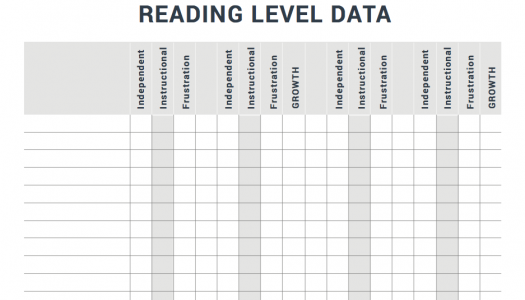The Power of Informal Assessment
Join Our Community
Access this resource now. Get up to three resources every month for free.
Choose from thousands of articles, lessons, guides, videos, and printables.
Students make stronger progress when we are able to identify and meet their individual needs. This includes knowing when they understand a concept and need to be taken further or finding they lack the acquisition and need more guided support.
Math Daily 3 is the structure we use to meet the individual needs of our students. Just like Daily 5, it helps manage the math block, providing an opportunity to work with small groups and individuals.
I was working with a small group of math students who were reviewing the concept of adding fractions. As we sat on the floor together, I asked the group to get started, letting them know that I would watch and know how to best help based on where they got stuck.

Because Chris finds some math concepts difficult, his confidence often wavers. He looked up with relief and said, “You mean if I get stuck, it's okay?” I told him that watching where he struggled helped me know how to best help him. He went to work with a gusto I had not yet seen.
As the small group worked, some students struggled with the addition of the fractions when the result was greater than one whole. Others completed the practice page with ease, ready to move into addition of mixed fractions. Taking out my online conferring notebook, ConferringNotebook.com, I recorded my observations of each child.
After a few minutes of practice, I had the small group check in with their Math Daily 3 choice and head out to join the rest of the class. I began to move among the students scattered throughout the classroom. Using my previous observation notes taken on my ConferringNotebook account as my guide, I began to hold individual conferences.
I went to Chris first to follow-up on our small-group interaction. On the way, I grabbed a small dry-erase board and a baggie of fraction pieces. Sitting next to him, I wrote the addition fraction sentence ¾ + ¾ and watched as he used the fraction pieces to illustrate and solve the problem. After he put the six ¼ pieces together, he saw the result was one whole circle with an additional ½. His face lit up as he grabbed the marker and wrote = 1½ on the dry-erase board.
After going through a few more problems and using the fraction manipulatives, I moved on to confer with other individuals, letting my ConferringNotebook notes guide my teaching.
At the end of the math block, I thought about the powerful results of combining the structure of Math Daily 3, informal assessment, and individual instruction. This combination accomplished a number of things:
- A struggling student learned it was okay to struggle. By letting me observe where he got stuck, I was able to help him move forward.
- ConferringNotebook keeps track of my observations so I can align instruction with student needs.
- The structure of Math Daily 3 allowed me to observe and meet needs right away. In the past I would have waited until the end of math time or the end of the day to look at the student pages, moving support to the next day, losing valuable just-in-time instruction and momentum.
This year as you work with small groups of students, whether in math or any other content area, consider telling the children that you will observe as they practice, see where they get stuck, and then help support them from there. This combined with the conferring notebook (whether it's online or physical) and the structure of Math Daily 3 results in supporting and accelerating student learning.







